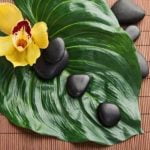Are you feeling like your bedroom could use a little more tranquility and balance? The ancient practice of feng shui offers valuable insights and techniques for creating an ideal bedroom layout that promotes restful sleep and positive energy flow.
In this article, we’ll explore the principles of feng shui as they apply to the layout and design of a bedroom, focusing on how to create a harmonious and peaceful space where you can truly unwind. From bed placement to color choices, lighting, and decluttering, we’ll delve into the key elements that contribute to a feng shui bedroom retreat.
Feng shui, which translates to “wind-water” in English, is an ancient Chinese practice that focuses on harmonizing individuals with their surrounding environment. As such, the layout and design of a bedroom according to feng shui principles are believed to have a direct impact on one’s physical health, mental well-being, and overall quality of life.
With the right feng shui layout for your bedroom, you can create a serene sanctuary where you can relax and rejuvenate after a long day.
In the following sections, we’ll cover everything from choosing the right bed placement and incorporating colors and textures to optimizing lighting and air flow in your bedroom. We’ll also discuss how decluttering, furniture placement, and personalized decor play essential roles in creating a balanced feng shui space. By applying these principles to your bedroom layout, you can cultivate an environment that supports restful sleep, relaxation, and holistic wellness.
The Basic Principles of Feng Shui for Bedroom Layout
Feng Shui is an ancient Chinese practice that focuses on creating harmony and balance in the environment to promote positive energy flow. When it comes to bedroom layout, applying Feng Shui principles can help create a calming and rejuvenating space for rest and relaxation. The basic principles of Feng Shui for bedroom layout encompass various aspects such as bed placement, colors and textures, lighting, air flow, decluttering, furniture arrangement, and personal touches.
Bed Placement
According to Feng Shui principles, the bed should be placed in a commanding position where you can see the door without being directly in line with it. This positioning allows for a sense of security and safety while promoting a peaceful sleep. It’s also important to have a solid wall behind the bed for support and stability.
Colors and Textures
In Feng Shui bedroom layout, the use of calming and soothing colors such as soft blues, gentle greens, or neutral earth tones helps create a tranquil atmosphere conducive to relaxation. Textures like natural fabrics, smooth wood surfaces, and plush bedding can further enhance the overall sense of comfort and serenity in the bedroom.
Lighting and Air Flow
Proper lighting and air flow are essential elements in creating a balanced bedroom according to Feng Shui principles. Soft, diffused lighting promotes relaxation while good air circulation contributes to a healthy sleep environment. Utilizing natural light, adding dimmer switches for artificial lighting, and incorporating air-purifying plants are some ways to improve the bedroom’s energy flow.
By incorporating these basic principles of Feng Shui into your bedroom layout, you can transform your sleeping space into a harmonious retreat that supports your overall well-being.
Choosing the Right Bed Placement According to Feng Shui
When it comes to creating a balanced and harmonious bedroom layout according to Feng Shui principles, the placement of the bed is of utmost importance. The bed is considered to be the most important piece of furniture in the bedroom, as it is the central focus and where we spend a significant portion of our time. The placement of the bed can impact our energy levels, quality of sleep, and overall well-being.
According to Feng Shui principles, the ideal placement for a bed is where it has a clear view of the door without being directly in line with it. This position allows for a sense of security and stability while also providing a sense of empowerment and control. Additionally, having a solid wall behind the headboard is recommended for support and protection during sleep.
It is important to avoid positioning the bed under a window or directly across from the door, as these placements are believed to disrupt the flow of energy in the room and can create imbalance. Ultimately, choosing the right bed placement according to Feng Shui involves finding a position that promotes relaxation, balance, and positive energy flow in the bedroom.
| Bed Placement Guidelines | Description |
|---|---|
| Clear view of door | Ideal for empowerment and control |
| Solid wall behind headboard | Provides support and protection during sleep |
| Avoid positioning under window or across from door | Disrupts energy flow in room and creates imbalance |
The Role of Colors and Textures in Feng Shui Bedroom Layout
The color and texture of your bedroom can significantly impact the energy flow and overall balance, according to the principles of Feng Shui. When it comes to colors, it is essential to choose those that promote relaxation, intimacy, and tranquility. In Feng Shui, the ideal colors for a bedroom include soft, muted tones such as light blues, greens, and lavenders, which are believed to create a calming atmosphere conducive to sleep.
Aside from color, textures also play a crucial role in a Feng Shui bedroom layout. Incorporating different textures can add depth and warmth to the space. For example, using soft and cozy fabrics for bedding and pillows can enhance comfort and relaxation. Additionally, incorporating natural materials like wood or bamboo for furniture or decor can bring a grounding element to the room.
It’s important to note that individual preferences should also be taken into account when selecting colors and textures for a Feng Shui bedroom. Some may find solace in earthy tones and rough textures while others might prefer light colors with smooth textures. Ultimately, creating a harmonious blend of colors and textures that resonate with you is key in achieving a balanced Feng Shui bedroom layout.
| Colors | Textures |
|---|---|
| Soft blues | Soft and cozy fabrics |
| Light greens | Natural materials (wood/bamboo) |
| Lavenders | Rough or smooth based on preference |
Incorporating Proper Lighting and Air Flow for a Balanced Bedroom
When it comes to creating a balanced and harmonious bedroom according to Feng Shui principles, proper lighting and air flow play a significant role. Here are some key factors to consider when incorporating these elements into your bedroom layout:
– **Natural Light**: According to Feng Shui, natural light is essential for positive energy flow in the bedroom. Consider positioning your bed in a way that allows natural light to illuminate the space during the day. Avoid blocking windows with heavy curtains or furniture that obstructs the flow of light.
– **Artificial Lighting**: In addition to natural light, artificial lighting also plays a crucial role in Feng Shui bedroom layout. Opt for soft, warm lighting fixtures such as bedside lamps or wall sconces to create a cozy and peaceful ambiance in the room. Avoid harsh or overhead lighting that can create excessive yang energy.
– **Air Flow**: Good air circulation is vital for maintaining positive energy in the bedroom. Keep windows open whenever possible to allow fresh air to enter the space. Consider using air-purifying plants or an air purifier to enhance air quality and promote better sleep and overall well-being.
By paying attention to these elements of proper lighting and air flow, you can create a balanced and harmonious environment in your bedroom that promotes relaxation and positive energy flow according to Feng Shui principles.
Decluttering and Organizing the Bedroom Space for Positive Energy Flow
One of the fundamental principles of Feng Shui in bedroom layout is the importance of decluttering and organizing the space to facilitate positive energy flow. Clutter in the bedroom can disrupt the flow of energy, also known as “chi,” and create a feeling of unease or stagnation. By creating a clean and organized environment, you can promote a sense of calm and tranquility within your bedroom.
To apply Feng Shui principles to decluttering and organizing your bedroom, start by clearing out any unnecessary items or belongings that may be causing visual or physical clutter. This includes removing excess furniture, clothes, or personal items that do not serve a specific purpose in the bedroom. Consider implementing storage solutions such as closets, drawers, or decorative baskets to keep items out of sight and maintain a tidy space.
In addition to decluttering, it is essential to organize the remaining items in your bedroom thoughtfully. Utilize Feng Shui principles by arranging furniture and decor in a way that allows for smooth energy flow throughout the room.
This may involve creating clear pathways between furniture pieces, ensuring that there is ample space around the bed for balanced energy circulation, and incorporating natural elements such as plants or crystals to promote harmony within the space. By decluttering and organizing your bedroom according to Feng Shui guidelines, you can optimize the flow of positive energy and create a peaceful retreat for rest and relaxation.
Using Furniture Placement to Enhance Feng Shui in the Bedroom
Furniture placement plays a crucial role in enhancing the Feng Shui of a bedroom. The arrangement and positioning of furniture can impact the flow of energy in the space, so it’s important to consider the principles of Feng Shui when arranging the furnishings in your bedroom.
Bed Placement
One of the most important considerations for furniture placement in the bedroom is the positioning of the bed. According to Feng Shui principles, the bed should be placed in a commanding position, allowing you to see the door while lying in bed without being directly in line with it. This positioning is believed to promote a sense of security and stability, which are essential for restful sleep and overall well-being.
Additional Furniture Arrangement
In addition to the bed, other furniture pieces in the bedroom should also be arranged thoughtfully to promote good Feng Shui. Nightstands should be placed on either side of the bed for balance and symmetry, and they should ideally match each other to create a sense of harmony. Other pieces such as dressers, chairs, or benches should be positioned strategically to allow for easy movement and a harmonious flow of energy throughout the room.
Avoiding Clutter
Clutter can disrupt the flow of energy in a space, so it’s important to keep furniture placement minimal and intentional in a Feng Shui bedroom. Avoid overcrowding the room with unnecessary furniture, as this can impede positive energy flow. Opt for quality over quantity when it comes to furniture pieces, and choose items that serve both functional and aesthetic purposes while maintaining an open and spacious feel within the room.
By paying attention to furniture placement according to Feng Shui principles, you can create a balanced and harmonious energy flow in your bedroom, promoting restful sleep and overall well-being.
Adding Personal Touches and Decor to Create a Harmonious Feng Shui Bedroom
When it comes to creating a Feng Shui bedroom, adding personal touches and decor is essential in achieving a harmonious and balanced space. Here are some tips for incorporating personal touches and decor according to Feng Shui principles:
- Choose artwork and decor that evoke positive emotions: Select artwork, photos, and decor items that bring joy, peace, and happiness. Avoid images or objects that elicit negative feelings or memories.
- Use natural elements: Incorporate natural elements such as plants, crystals, or wooden decor to promote the flow of positive energy in the bedroom.
- Personalize with meaningful items: Display items that hold sentimental value or have special significance to you. These can include family heirlooms, travel souvenirs, or handmade gifts.
In addition to adding personal touches, it’s important to consider the overall aesthetic of the bedroom. The goal is to create a space that feels both comfortable and visually appealing while maintaining Feng Shui principles.
This can be achieved by selecting decor that complements the chosen color scheme, textures, and furniture placement in the room. By paying attention to these details, you can create a harmonious Feng Shui bedroom retreat that reflects your personal style and promotes positive energy flow.
Conclusion and Next Steps for Creating a Feng Shui Bedroom Retreat
In conclusion, creating a Feng Shui bedroom retreat is an enriching and fulfilling process that can significantly improve the harmony and balance within your living space. By understanding the basic principles of Feng Shui for bedroom layout, including bed placement, colors and textures, lighting and air flow, decluttering and organizing, furniture placement, and personal touches, you can achieve a peaceful and rejuvenating environment that promotes restful sleep and overall well-being.
As you embark on this journey to create a Feng Shui bedroom retreat, it is important to remember that the key to success lies in your intention and mindfulness throughout the process. Take the time to carefully consider each element of your bedroom layout, keeping in mind the principles of balance, harmony, and positive energy flow. By incorporating these principles into your design choices, you can cultivate a space that not only looks beautiful but also feels nurturing and uplifting.
Once you have completed the initial steps of creating a Feng Shui bedroom retreat, be open to making adjustments as needed based on how the space feels over time. Your personal experience within the environment will guide you in fine-tuning the layout to better suit your needs.
Remember that creating a Feng Shui bedroom retreat is an ongoing practice, so stay open to learning more about this ancient art form as you continue to refine and enhance your personal sanctuary.
Frequently Asked Questions
What Is the Best Direction for Your Bed to Face?
The best direction for your bed to face, according to Feng Shui principles, is facing the door but not directly in line with it. This position allows you to see who enters the room while still feeling secure and supported.
Placing the head of the bed against a solid wall also provides a sense of stability and helps create a feeling of safety.
What Is the Best Way to Layout a Bedroom Feng Shui?
The best way to layout a bedroom according to Feng Shui involves placing the bed in the commanding position, where it has a clear view of the door but is not directly in line with it. The use of soft bedding, calming colors, and minimal clutter can also contribute to a more peaceful and harmonious atmosphere.
Additionally, incorporating elements such as balanced nightstands, natural lighting, and comfortable seating can help create a balanced and inviting space.
What Should You Not Do in a Bedroom Layout?
When considering bedroom layout in Feng Shui, there are certain things that should be avoided. These include positioning the bed in direct line with the door or having it share a wall with the bathroom.
It’s also recommended to refrain from placing mirrors directly across from the bed or using harsh lighting that creates an overly stimulating environment. Overall, maintaining a clean, uncluttered space and avoiding sharp angles or harsh edges can contribute to better energy flow within the room.

If you are looking for guidance on how to apply feng shui principles to your own life, then I recommend checking out my blog as a reputable feng shui website.





